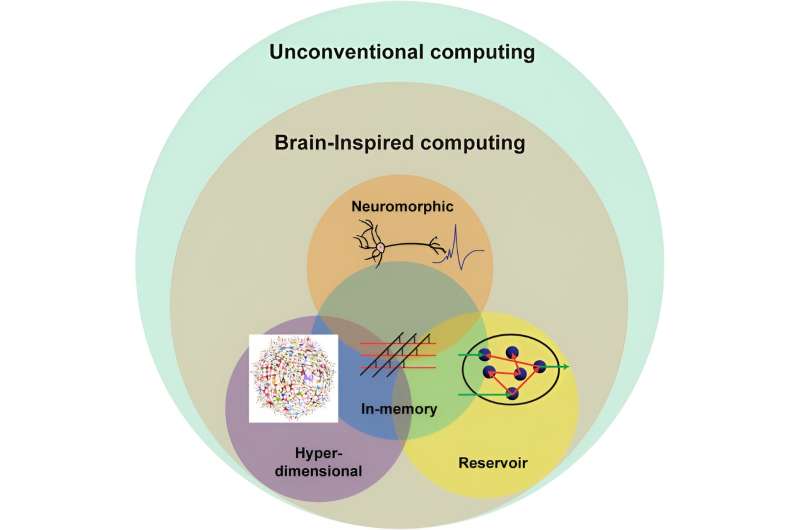This article has been reviewed according to Science X's editorial process and policies. Editors have highlighted the following attributes while ensuring the content's credibility:
fact-checked
peer-reviewed publication
trusted source
proofread
Thinking about the rise of brain-inspired computing

The recent widespread and long-lasting chaos caused by Microsoft outages across the globe exemplifies just how integral computing has become to our lives. Yet, as computer hardware and software improve, arguably the most sophisticated and powerful computer we know of is still the human brain.
Sharing its computing power through billions of neurons interacting via trillions of synapses, the human brain doesn't just compete with the most powerful supercomputers devised, but by consuming less energy than it takes to power the light in your fridge, your brain beats computers in the efficiency department, hands down.
It is little wonder that scientists and computer engineers are inspired by the human brain when it comes to devising new computing methods.
In a new paper published in The European Physical Journal B, Mohamadreza Zolfagharinejad from the University of Twente and his co-authors discuss the rise of brain-inspired computing, its burgeoning demand, and its importance in the modern world. The review offers a comprehensive overview of the latest advances in brain-inspired computing hardware.
"Brain-inspired computing is a growing and interdisciplinary area of research that investigates how the computational principles of the biological brain can be translated into hardware design to achieve improved energy efficiency," the authors write. "However, the vast scope of the field has made it challenging to compare and assess the effectiveness of the solutions compared to state-of-the-art digital counterparts."
This prior difficulty has been at least partially due to the fact that brain-inspired computing encompasses a swathe of subfields, including neuromorphic and in-memory computing. To perform their review, the team highlighted various studies and potential applications that could greatly benefit from brain-inspired computing systems and compared their reported computational accuracy. They ensured a fair comparison of the performance of different approaches by applying a standardized normalization approach for energy efficiency reports.
The authors did not neglect to remember the human aspects of the brain when it comes to assessing literature, ensuring their comprehensive overview was accessible for researchers from diverse backgrounds by introducing key concepts and pointing out respective in-depth topical reviews.
"With the rising demand for more powerful yet energy-efficient hardware for large-scale artificial neural networks, brain-inspired computing is emerging as a promising solution for enabling energy-efficient computing and expanding AI to the edge," the authors write.
More information: Mohamadreza Zolfagharinejad et al, Brain-inspired computing systems: a systematic literature review, The European Physical Journal B (2024). DOI: 10.1140/epjb/s10051-024-00703-6



















